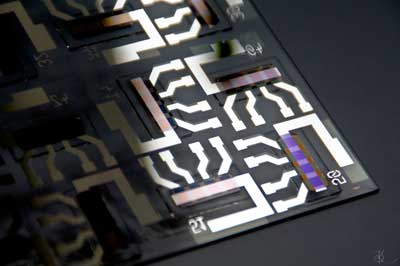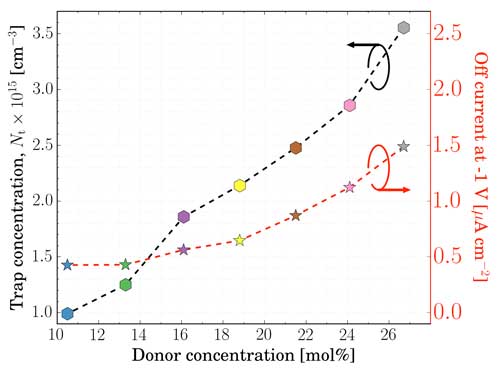| Jan 23, 2021 |
Reducing traps increases performance of organic photodetectors
(Nanowerk News) Physicists at the Dresden Integrated Center for Applied Physics and Photonic Materials (IAPP) discovered that trap states rule the performance of organic photodetectors, ultimately limiting their detectivity.
|
|
These highly promising results have now been published in the renowned scientific journal Nature Communications ("Reverse dark current in organic photodetectors and the major role of traps as source of noise").
|
 |
| Flexible organic photodetectors (OPDs) have a huge potential for applications in low-cost imaging, health monitoring and near infrared sensing. (Image: Christian Körner)
|
|
Organic photodetectors (OPDs) have a huge potential for applications in low-cost imaging, health monitoring and near infrared sensing. Yet, before industrially realizing these applications, the performance of these devices still needs to be improved.
|
|
Recent research on organic photodetectors based on donor-acceptor systems has resulted in narrow-band, flexible and biocompatible devices, of which the best reach external photovoltaic quantum efficiencies of close to 100%. However, the high noise in the off state produced by these devices limits their specific detectivity, severely reducing the performance, for example measuring faint light.
|
|
Jonas Kublitski and his colleagues at the Dresden Integrated Center for Applied Physics and Photonic Materials (IAPP) and the Institute of Applied Physics (IAP) at TU Dresden now found out that the high noise in the off state is a consequence of unwanted trap states distributed near the mid-gap of organic semiconductors. By measuring the amount of traps, the physicists draw a direct correlation between the characteristics of the trap states and the off state of OPDs.
|
 |
| By modelling the dark current of several donor-acceptor systems, Mr. Kublitski reveals the interplay between traps and charge-transfer states as the source of dark current and shows that traps dominate the generation processes in the dark. (Image: Jonas Kublitski)
|
|
Building on these results, Mr. Kublitski was able to draw a model depicting this relation:
“By modelling the dark current of several donor-acceptor systems, we reveal the interplay between traps and charge-transfer states as a source of dark current and show that traps dominate the generation processes, thus being the main limiting factor of OPD detectivity.
|
|
The newly discovered relation does only clarify the operation of OPDs but gives guidance for further research in the field. This work is a result of four years of research during my Ph.D. I am very happy to share these results, as they can refocus the attention of our field into understanding the origin of the limited performance of OPDs, which was so far unknown.”
|


